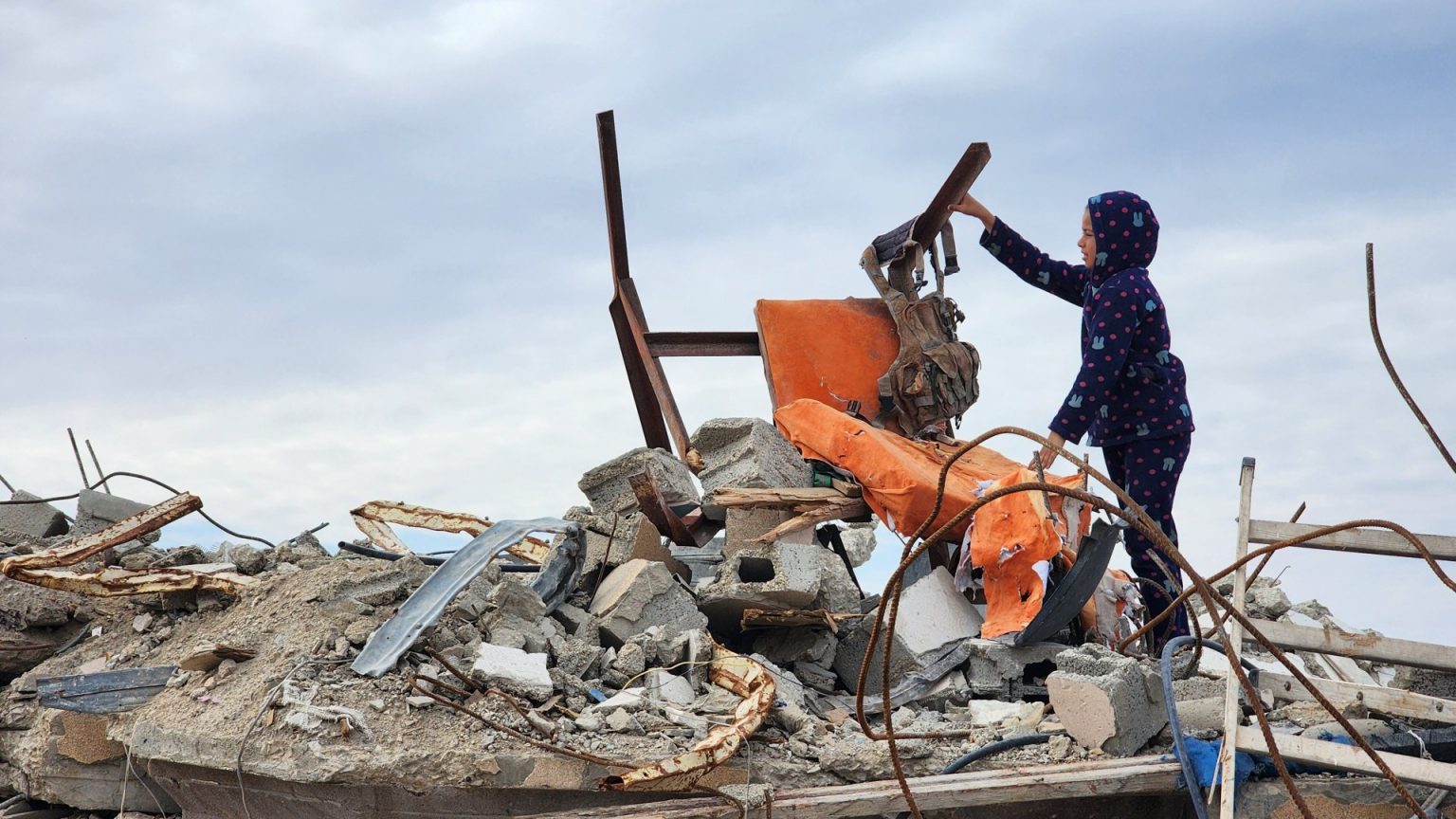The discovery of Yahya Sinwar’s military vest amidst the rubble of his destroyed Gaza home serves as a stark reminder of the targeted killing of the Hamas kingpin and the ensuing ceasefire that followed. The vest, draped on the chair where Sinwar was fatally shot by Israeli troops, has become a poignant symbol, both of his demise and, for some, of his perceived martyrdom. Unearthed by Ashraf Abu Taha, the owner of the Rafah home, the vest and the chair itself have transformed into macabre mementoes. The site, once a residence, has now become a shrine for some, who visit to take photos in the chair, a chilling testament to the enduring impact of Sinwar’s death and the ongoing conflict. Abu Taha, despite the destruction of his home, expresses a sense of pride in Sinwar’s “martyrdom” occurring within its walls, illustrating the complex and often contradictory emotions surrounding the conflict.
Sinwar’s death, occurring three months prior, is widely viewed as a pivotal moment that paved the way for a ceasefire deal between Israel and Hamas. The timing of his killing, shortly after the October 7 massacre orchestrated by Hamas, suggests a calculated move by Israeli forces to eliminate a key figure in the militant group and potentially destabilize its leadership. The subsequent ceasefire, which resulted in the release of some Israeli hostages, further underscores the significance of Sinwar’s demise in shaping the trajectory of the conflict. The vest, a tangible artifact of his final moments, becomes a symbolic representation of this turning point, a silent witness to the events that led to a fragile peace.
The image of the vest, draped on the chair where Sinwar met his end, is a stark visual reminder of the brutality of the conflict and the human cost of war. It serves as a focal point for a complex web of emotions – grief, anger, and even a perverse sense of pride, depending on one’s perspective. For some, it is a symbol of resistance and martyrdom, while for others, it represents the elimination of a dangerous enemy. The act of posing for photos in the chair, a gesture of reverence or perhaps defiance, further underscores the vest’s potent symbolism and its ability to evoke strong emotional responses.
The release of the first Israeli hostages as part of the ceasefire agreement is seen as a direct consequence of Sinwar’s death and the pressure it placed on Hamas. The connection between his killing and the subsequent truce highlights his significant role within the organization and the impact his removal had on their strategic decision-making. The hopes of families awaiting the release of the remaining hostages are inextricably linked to the ceasefire, further solidifying Sinwar’s death as a crucial turning point in the ongoing struggle between Israel and Hamas. The fragile nature of the truce, however, is underscored by the uncertainties surrounding the remaining hostages, with Israeli officials expressing concerns about the lack of specific information regarding their identities and well-being.
The focus on the remaining hostages, particularly the young Bibas brothers, intensifies the emotional weight of the situation. Their fate hangs in the balance, adding a layer of human tragedy to the already complex political landscape. The uncertainty surrounding their status underscores the precarious nature of the ceasefire and the ongoing challenges in securing the release of all captives. The fear that Hamas may only provide a number of surviving hostages, without disclosing their names, further heightens the anxiety and underscores the mistrust that pervades the relationship between the two sides.
The image of Sinwar, a seasoned commander often depicted in the heart of battle, contrasts sharply with the image of his lifeless body surrounded by Israeli troops and the subsequent discovery of his vest in the rubble. This juxtaposition underscores the abrupt end to his leadership and the swift shift in power dynamics within Hamas. The vest, once a symbol of his authority and military prowess, becomes a relic of a fallen leader, a stark reminder of the volatile and unpredictable nature of the conflict. The transformation of his home into a shrine further underscores the complex legacy of Sinwar, a figure revered by some and reviled by others, whose death has left an indelible mark on the ongoing Israeli-Palestinian conflict.


